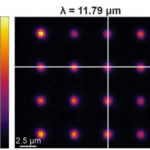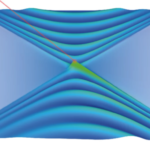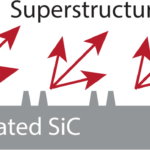Author
Congratulations to Ryan Kowalski for the NASA fellowship!
May. 24, 2022—The Caldwell lab’s proposal “Nano-Optic Probing of Vibrational Modes of Defects and Color Centers in Semiconductors”, authored by graduate student Ryan Kowalski, was selected by the NASA Space Technology Graduate Research Opportunity (NSTGRO) to research single-photon emitting point defects in hexagonal boron nitride and silicon carbide. The NSTGRO is part of NASA’s initiative to support...
Check out our new collaborative work with Alexander Paarmann’s group!
Mar. 29, 2022—Our recent collaborative work with Alexander Paarmann’s group demonstrates super-resolution microscopy in the long-wave infrared (LWIR) range using IR-visible sum-frequency generation. The localized surface phonon polaritons in 4H-SiC nanostructures are imaged as a proof-of-concept. Check it out here!
Our work discovering “Shear” polaritons was just published in Nature!
Mar. 17, 2022—Check out our recent work published in Nature! With collaborators we discovered new “shear” hyperbolic polaritons that arise from the asymmetry in monoclinic beta-Gallium Oxide. These unique polaritons show remarkable new physics, and offer huge promise in controlling light propagation at the nano-scale! Find the article here! And a press release here!
Check out our SiC subarray work!
Dec. 29, 2021—Ending 2021 with our fresh ACS Nano paper! In this work, we exploit more complicated unit-cell structures to realize localized surface phonon polaritons (LSPhP) modes with additional degrees of design freedom. Our subarrays described here represent a modal design platform that offers the low-loss, subdiffractional confinement of light associated with LSPhPs, but expanding the precise...
Check out our superstructure grating work!
Apr. 8, 2021—Our recent superstructure grating work just published in Applied Physics Letters! We demonstrated multiple coherent emission modes at different combinations of frequency and angle, controlled by the superstructure design. These superstructure gratings can be used to tailor the thermal emission of polaritonic thermal emitters. We also suggest the coherence length can be used as an appropriate...
Check out our recent work on thermal emission engineering!
Feb. 16, 2021—Our recent work on thermal emission engineering just published in Nano Letters. By leveraging three-oscillator strong coupling, the spectral and spatial dispersion of thermal emission can be engineered for a variety of IR applications. We demonstrated a five-fold improvement in the spatial coherence and a three-fold enhancement of the quality factor of the mixed polaritonic...





